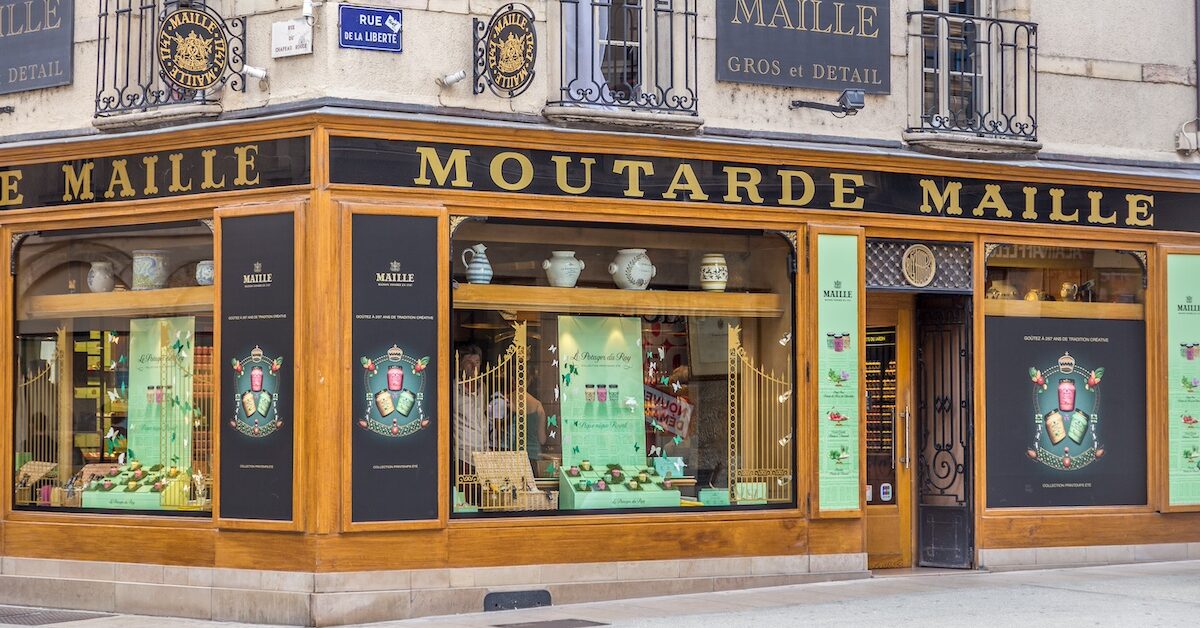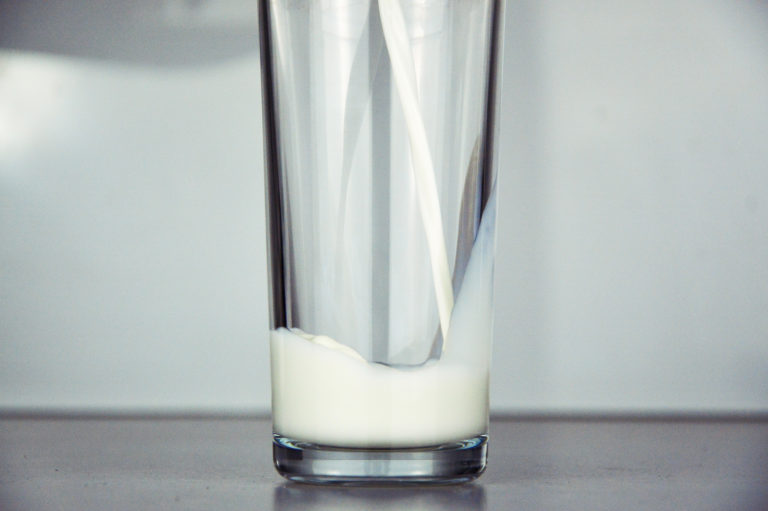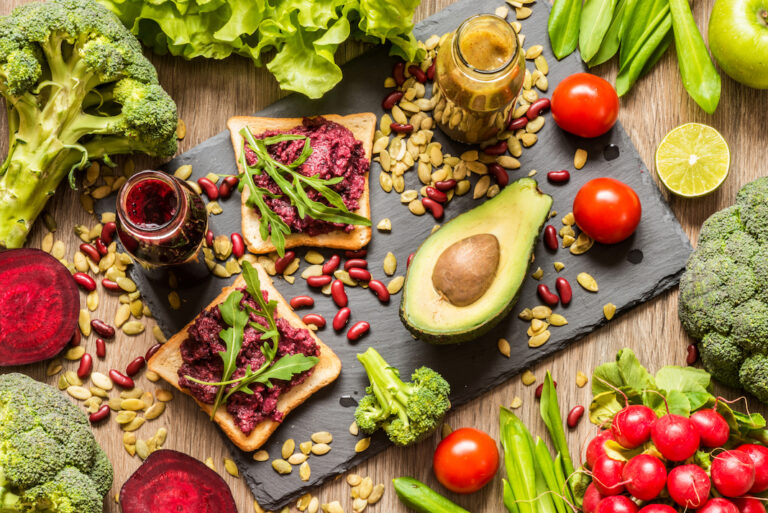From the white tablecloth restaurants of Paris’s 1st arrondissement, to the natty wine bars of the Lower East Side, sommeliers use their knowledge of wine to enhance and elevate your meal. But what if you could do the same… with mustard?
Chef Brandon Collins, Unilever Corporate Executive Chef and Mustard Sommelier, is living proof that you can—and should. Collins, who works for the heritage French mustard brand Maille (which also makes some of France’s best cornichons), has trained in the fine mustard arts, in order to “understand how mustard plays a role in food, and how we can utilize mustard as more than just a condiment.”
A Brief History of Maille
Mustard has played such a significant role in France that the French even have an expression, “Se croire le premier moutardier du pape,” which means, “They believe they’re the Pope’s head mustard-maker,” to describe when someone is acting full of themself. And while Maille might not have been a primary papal supplier, they are certainly well known to kings and queens.
Mustard made by Antoine-Claude Maille was initially marketed as a tonic to prevent the bubonic plague in the early 18th century, due to its antimicrobial properties (similar to how many people use apple cider vinegar today). Maille’s family then used this notoriety to open a boutique in Paris in 1747. The company became the official mustard supplier to the court of King Louis XV, and was frequented by notable court figures like the King’s mistress, the Marquise de Pompadour. The mustard’s relatively smooth flavor, which didn’t cause the aristocracy to tear up and ruin their makeup (as some other mustards did), made it the preferred brand for French and foreign royalty. Maille went on to supply mustard to the courts of Austria and Hungary; Empress Catherine II of Russia; William IV, the King of England; and other French kings, including Louis XVI and Louis XVIII. The brand then opened its boutique in Dijon in 1845, where it has been selling traditional Dijon mustard ever since.

Why do the French love mustard so much?
Now, anyone who is familiar with French cuisine knows that France isn’t big on spicy food. Yet mustard, with its sharp tang, can be found on almost any French table. According to Chef Collins, the reason is simple: “French food is, at its core, fresh, but it is no secret that butter and fat are also a fairly large component of traditional French cuisine. Mustard, by nature, helps to cut that fat.” This is why it’s often found in traditional French dishes like poulet à la moutarde, where it forms part of a creamy sauce for chicken, or tarte aux moutarde, where it melds with the cheesy base of this summery tomato tart. Mustard can be found in French dishes throughout the country, tying together regional specialties as vastly different as Le Welsh in Lille and pan bagnat in Nice. And, of course, you’re likely to find it on your charcuterie and cheese boards.

Unexpected Ways to Use French Mustard
It’s the job of Chef Collins to experiment with different recipes to find new and unexpected places where mustard can fit in. In addition to meats, veggies, and cheeses, Collins likes to pair mustard with an unlikely ally: “Chocolate and mustard are a match made in heaven,” Collins insists. “Mustard reacts the same way with chocolate that espresso does. So, if you need to replace the powdered espresso in your brownie, reach for your jar of Dijon or Dusseldorf.”
Just as mustard can enhance chocolate, it can also enhance cocktails. Collins recommends adding a few drops of a mustard solution (1 part mustard to 3 parts water) to a cocktail at your next apéro, as an easy way to enhance the flavors of your drink.
In general, when pairing mustard with drinks, the chef suggests finding beer or wine from the same region as your mustard, such as bringing Dijon mustard together with a wine from Burgundy. “Also, the more powerful the mustard, the more you need something to hold up to it. Colman’s, for example, is a spicier mustard and holds up well to stouts, etc., whereas a French’s yellow mustard is great with an ice-cold lager.”
Chef Collins works with other culinary ventures to spread the word about mustard and its versatility. He is currently collaborating with the cult favorite NYC bakery, L’Appartement 4F, as well as the Boston area wine bar Rebel Rebel, on some new mustardy menu items. But you can just as easily enjoy the fruits of Collins’ labors at home by picking up some Maille at your local grocery store, from their classic grainy mustard à l’ancienne, to their special hot honey Dijon collaboration with Mike’s Hot Honey. Follow Chef Collins on Instagram for inspiration for using mustard in everything from cocktails to brownies. Your taste buds will thank you.
Catherine Rickman is a writer, professional Francophile, and host of the Expat Horror Stories podcast. She is currently somewhere in Brooklyn with a fork in one hand and a pen in the other, and you can follow her adventures on Instagram @catrickman, or on TikTok @catinthekitchen.






